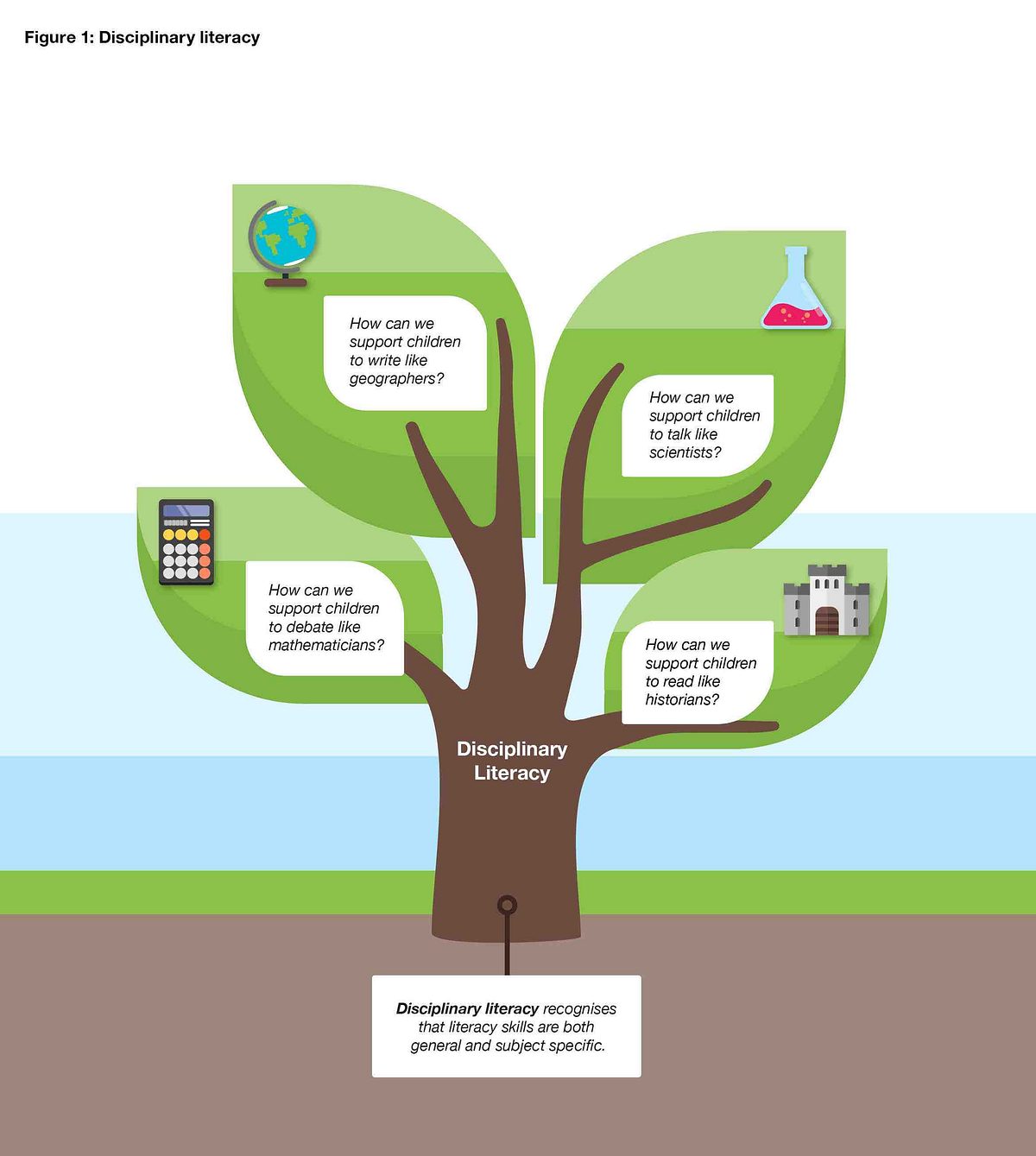For a long time, literacy in secondary schools was the sole responsibility of the time-poor literacy co-ordinator. Generic literacy practices such a SPaG (spelling, punctuation and grammar) were common, but too often how to read, write and communicate well within specific subject disciplines was sidelined. Disciplinary literacy has offered a welcome shift for secondary school teachers and leaders.
But what exactly is disciplinary literacy and how do we address it in practice?
In our ‘Improving Literacy in Secondary Schools’ guidance report, supporting disciplinary literacy is recommendation one. It describes an approach to improving literacy across the curriculum whereby all teachers are supported to understand how to teach students to read, write, and communicate effectively in their subject.
What is disciplinary literacy?
Disciplinary literacy is based on the idea that ‘each subject has its own unique language, ways of knowing, doing, and communicating.’
In short, it’s not an optional add-on for subject teachers, rather, it’s integral to their practice.

This ‘disciplinary literacy tree’ is a useful analogy to begin to illustrate the relationship between general and subject specific literacy skills. If we begin at the roots of the model, we can interpret the fertile ground of the soil as akin to early language development. That is to say, the general encounters with vocabulary, a rich oral language environment and reading at home, which are necessary for planting the secure literacy roots a sapling needs to grow.
You could describe the disciplinary literacy tree as more of a sapling in primary school, but the vital development of foundational reading and writing skills fostered in Early Years and Key Stage 1 still matter in the growth of the tree.
By Key Stage 2, the sapling will start to develop branches in different subject domains through non-fiction texts. However, as the branches spread and become more distinct, teachers need to be skilled in drawing attention to these differences for the tree to flourish.
As children move to secondary school, the more defined branches mark the fact that literacy and text become what we describe in the guidance report as “increasingly specialised” across the disciplines of different curriculum domains.
For students to effectively access and switch between different academic codes when they reach Key Stage 3 and beyond, they need this expertise to be unlocked deliberately and explicitly. As a result, disciplinary literacy proves an important area of professional knowledge for every teacher.
Tackling the challenge of disciplinary literacy with subject teachers
It is not easy to develop knowledge and practice to attend disciplinary literacy, as many subject teachers may not feel knowledgeable or confident in this area.
Disciplinary literacy can be nuanced and complex. For example, reading a text in history can see pupils considering bias and provenance. This is very different to the experience of reading a text in maths, where Tier 2 polysemous vocabulary (the general sophisticated language we read in school texts) and the use of prose and graphics may be more important.
Teachers cannot take for granted that students will assimilate the often-hidden ways text operates, both in terms of consumption and production. Some students will do this seemingly seamlessly, but Shanahan and Shanahan state, ‘strong early reading skills do not automatically develop into more complex skills that enable students to deal with the specialized and sophisticated reading of literature, science, history, and mathematics.’
If your school is thinking about a disciplinary approach to literacy, the first step is to be aware of and recognise the different modes of reading and writing across the curriculum and start to unpick them.
Disciplinary literacy can offer a powerful approach for schools to consider implementing in their school to improve equity of curriculum access.
Further reading:
What is Disciplinary Literacy and Why Does it Matter? by Cynthia Shanahan and Timothy Shanahan.
Shanahan, T., & Shanahan, C. (2008). Teaching disciplinary literacy to adolescents: Rethinking content-area literacy. Harvard Educational Review, 78(1), 40 – 59.
